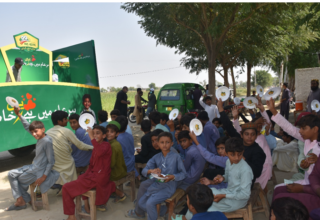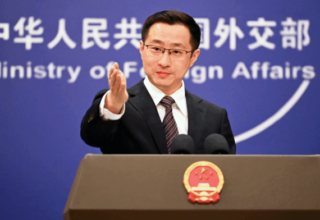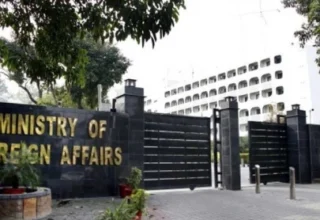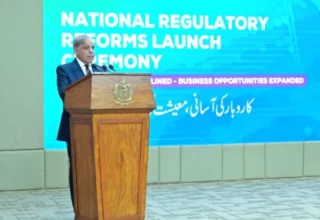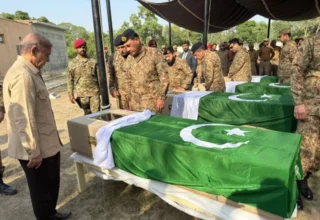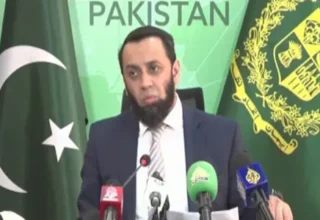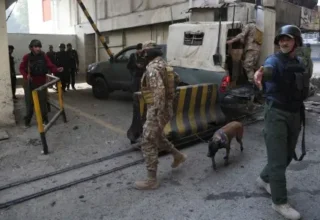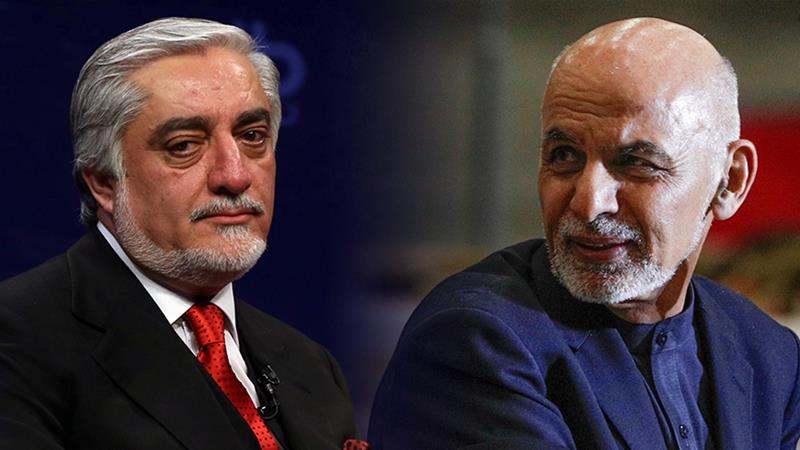
What to do with a mission that is stuck halfway?
By Dr. Hussain Yasa
The world has been turned upside down by the Corona Virus Pandemic. But the quest for a political settlement in Afghanistan remains stuck pretty much where it was before Corona. And yet, Afghanistan will have to adjust to a new international landscape, as the financial and political realities of the Corona world lead to a rewriting of the norms of international relations.
For two decades, the US and its western allies lavished blood and money on the quest for a functioning Afghan state. In spite of those endeavours, we today confront numerous signs of looming state failure. The distrust among the country’s various communities has reached an intensity not seen since the fall of the Taliban regime. And yet the problems we were supposed to tackle are still with us. The US invaded Afghanistan in 2001 and overthrow the Taliban regime to fight and defeat terrorism, however, terrorism still poses an exponential threat to sovereignty and integrity of Afghanistan, also affecting the region and the rest of the world.
And yet, on 29 February, the US signed a Peace Agreement with the same people it had vowed to prevent from coming back to power. Reminding the fact, it was the Taliban who harboured the perpetrators of 9/11 and many other terrorist networks plotting actions against nations around the world – Many of us are still trying to come to terms with the notion that the US should stand by its promises of helping Afghanistan in defeating Taliban, the chief proponents of terrorism who, so far, who, at least in parts, still share global terrorist aspirations of Al Qaeda.
The second phase of the US-brokered Taliban peace process was supposed to be an Intra-Afghan, negotiation scheduled 10 days after the agreement signed by the US and the Taliban. With recent Afghan presidential elections gone contentious, the post-presidential election dispute between Dr. Ashraf Ghani and his arch-rival Dr. Abdullah Abdullah further contributed to the delay in launching intra-Afghan dialogues. Though, teams around the two presidential contenders have struggled to settle their differences and form a joint administration, yet there is no final agreement on the delegates from Kabul to talk with the Taliban.

It is conceivable that the pressure on Kabul from all sides will lead to a deal between the presidential teams and that talks with the Taliban will eventually start. But currently constituted arrangement between opposing Afghan presidential camps, the political schism is persisting rendering the prospect for any agreement with the Taliban through intra-afghan dialogue remains a distant reality. No serious observer should be taken in by the misplaced optimism portraying the Afghan mission a success. War and political instability in Afghanistan are intrinsic with its solution hidden somewhere deep inside its historically repressed sense of collectiveness.
A few simple hypotheses to consider, in explaining why Afghanistan has proved intractable:
- It was not due to a shortage of money. The cost of the international intervention in Afghanistan has already exceeded the amount spent for the rebuilding of the whole Europe after the Second World War. The cost of the war has topped one trillion USD.
- The lack of mission success was not due to a lack of military commission. The US-led military alliance deployed up to 150,000 international troops, to combat terrorism and to train the Afghanistan National Security Forces (ANSF). They trained more than 350,000 Afghan troops to safeguard the country against terrorist groups including the Taliban. But even after this massive investment, the US was obliged to talk directly with its old foes the Taliban. For those who lost many comrades to Taliban IEDs, these direct talks must have been a bitter pill to swallow.
- It would also be wrong to conclude that, for some reason, Afghans are living in a non-functional state. Au contraire, there is plenty of evidence that Afghan aspirations have much in common with other people around the world. Afghans dream of a peaceful and prosperous life, where honour is protected. They aspire for their country to take its rightful place alongside the other nations of the region and the world.
- It is important to avoid attributing too much blame to Afghanistan’s location in an insecure and unfriendly region. Afghanistan is far from unique in having suspicious neighbours, but the long-lasting instability in Afghanistan is far beyond that experienced by countries in other difficult regions.

THE BAD PART OF THE STORY
Despite internationally assisted financial and security resources, the Afghan people are still struggling. By some reckonings, 75% of the population live under the poverty line. Afghanistan is second from the bottom of the global literacy rankings. Transparency International rank it as one of the most corrupt countries of the world. Afghan still produces over 90 percent of the world illicit opium supply. Afghanistan has been called the bloodiest country for journalists. It is one of the worst for women and children and still lacks basic maternity infrastructure. 11% of the adult population is addicted to illegal drugs and addiction is a growing problem among the young generation. Two-thirds of women suffer from various stages of depression. It should be remembered that these are just a few highlights of a situation which looks even worse when viewed close up.
Experts have written thousands of the pages on the issue. Ten years back, when the signs of failure started manifesting themselves, multiple propositions were put forward on how this mission could be rescued and how the US and the allies could undo the errors, to make it work. Now, after almost twenty years, the main question is how the US and allies can extricate themselves from the mission with honour. Of course, the policy-makers claim that their latest plan – the one involving bringing the Taliban on board through negotiations – is working.
But serious observers have concluded that the logical consequence of continuing with Ambassador Khalilzad’s plan in Afghanistan will lead to a new spell of power grab by the Taliban with the help of Al Qaeda, while those who remained allied to the US mission can either choose to retreat to the mountains or opt for another round of exile – Or simply prepare a new round of civil war to oppose the Taliban and its extremist partners to fight their medieval ideas of governance and arcane, oppressive interpretation of Sharia Law? Only this time with the help of new and more resilient regional partners who face the actual threats from the Taliban like terrorist entities.
Has anyone on the ground witnessed an easing of the Taliban war-mongering? Have other communities in Afghanistan reconciled themselves to the revival of the same discriminatory system against which they fought for years?
And, perhaps the most important question, have the Taliban given up the idea of exporting its extremist version of Sharia to other countries in the region or have they abandoned their relationship with the remnants of Al Qaeda and multitude of other foreign militant groups who link Afghanistan to the global jihad?
Alas, there are gloomy answers to all of these questions. The International community abandoning the mission in its current state would be highly disastrous.
MISDIAGNOSIS
Afghanistan is a land of stark cultural, communal and religious diversity. But still, none of them is ready to suppress that diversity by applying the archaic “Nation-State Theory”, though recently few Afghan leaders even tried to. Centralization of power might be good for homogenous societies but not for a country with such a rich diversity as Afghanistan. Afghanistan is the land of multiple communities, each having its period of ruling others in spans of history and none ever truly relied on the idea of Afghanistan being the land of a single nation. A successful nation is a social construct, built by communities voluntarily where issues of competing ethnicities are resolved first, who share a mutual respect for their ethnic identity, religion, language and cultural practices, generating a true sense of inclusivity. Political scientists, proponents of the “State-Nation theory” advocate fair and accommodative political and administrative systems, which is practically non-existent in Afghanistan.
The idea of Nation-State in Afghanistan is paradoxical risking exclusivity and repression. Expectations become absurd when the ruling Afghan political elite which the US and the west exported into Afghanistan were tasked with ruling it after the Taliban came to terms with them on such wishful ideas of governance. They advocated a strong centralized system, despite the fact that these ideas had been abandoned elsewhere in recent decades. The so-called alumni of some of the most modern universities of the world, with their archaic governance ideas, drove Afghanistan and the whole region into chaos, only this time wrapped in enigma of false hopes. The problems which the world wrestles within Afghanistan today are largely an outcome of the application of this outmoded approach to governance, particularly with reference to Afghanistan.
The Kabul elite’s addiction to a non-viable version of the highly centralised state has made it more difficult for the Afghan political forces who have worked with the US over the past two decades to combine to mount an effective resistance to the resurgent Taliban threat. The price to be paid for a failure to rally on the republican forces will be Taliban military victory.
FALSE NARRATIVE
Those who have tried to suppress pluralism in favour of hyper-centralisation and monopolization of power have drawn on false narratives of “Afghaniat”. They demand that the internationals recognise them as the sole repository of sovereignty while denigrating any call for real inclusivity or decentralisation as a plot to weaken the country. The code they use is expressed in slogans like:
“Afghanistan is the land of Afghans and they have the right to decide about their future by themselves”.
But Afghanistan’s status quo is not viable and, abruptly left to its own devices the country can be expected to revert to civil war. Even an agreement with the Taliban, if their real intention is actually to grab all power, would most likely be followed by the resumption of the civil war. Such an outcome would represent an unforgivable and avoidable waste of the blood and money invested in Afghanistan. The abandonment of Afghanistan or a negotiated surrender to the Taliban would simply mark a new low-point in the saga of Afghanistan’s long-lasting conflict.

CONCLUSION
1- Continuation of the US mission, with a sustainable level of investment and engagement, is a far preferable way forward to the US, compared to the alternative of writing off all the investment and departing precipitately. However, any decision to continue the mission must be linked to new ideas for decentralization of power and the empowerment of communities.
2- The Taliban have proven too unreliable to warrant the US depending exclusively on the Taliban sticking to their commitments in the Doha Peace deal. The US should also be prepared for ‘Plan B’ probably another dialogue track but this time with an absolutely different approach, should not be based on quid-pro-quo with the Taliban.
3- Even after the Post-Corona world, the US will remain the leading power in the world. It should use its influence in the region by engaging Afghan communities and the region in support of a revamped inclusive settlement in Afghanistan.
4- The US should reaffirm its confidence in a functional Afghan state as the best guarantee of security and stability in Afghanistan and the region. This is a more effective guarantee than any paper reassurance given by the Taliban. But for the state to be viable the political and administrative system needs an overhaul, with a “Federal Parliamentary System” and respect for democratic norms.
5- The US will have to learn some internal lessons from its intervention. The tools of intervention matter. In the case of Afghanistan, the US has experimented by relying on its main envoy on someone having conflict of interest over governance ideas and community politics. The experiment has failed and the US should reposition itself to stand above the fray.

Editor’s Note: Dr. Hussain Yasa is the founder of Afghanistan’s Daily ‘Outlook Afghanistan’. Currently, Dr Yasa is based in Germany. He can be reached at dr.yasa1967@gmail.com. The article reflects the author’s views and not necessarily the views of the DiploMag.

